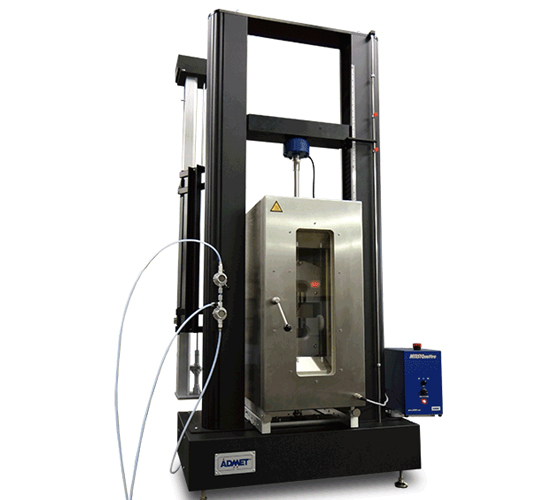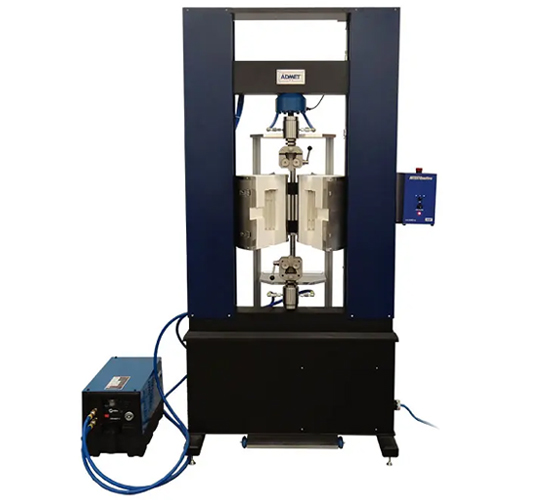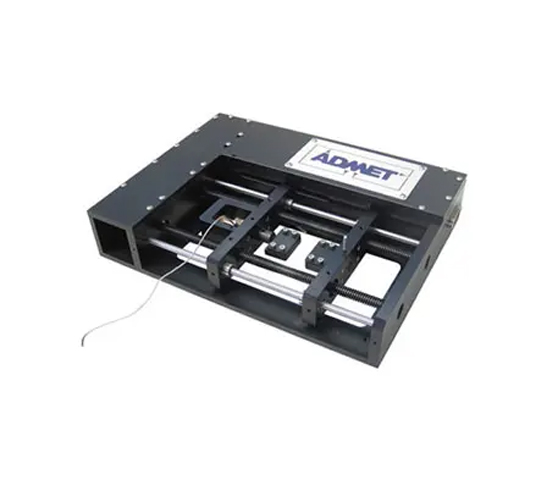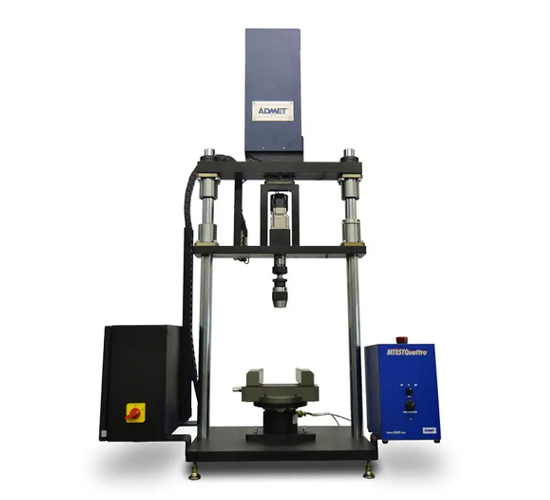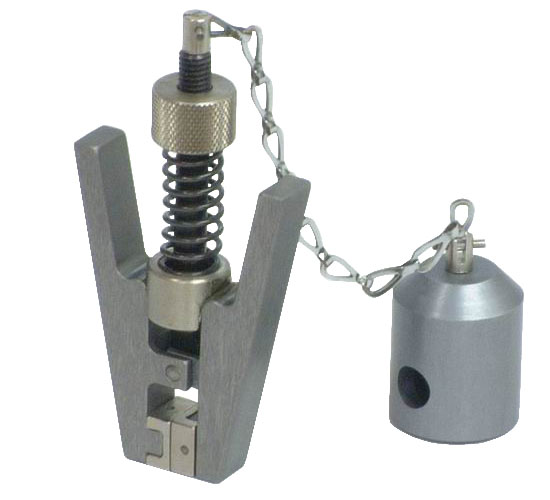
Clamp Grips: Precision Gripping Solution for Low Force Load Applications
The Clamp Grips are designed for low force load applications, offering a precise and secure method of holding samples during testing. These grips are ideal for applications requiring delicate handling and accurate force measurement.
universal testing machine accessories, universal testing machine price, accessories, clamp grips, low force testing, material testing grips, aluminum grips.
Clamp Grips are essential accessories designed for securely holding specimens during tension, compression, or elongation tests with universal testing machines. These grips provide a reliable and versatile solution for testing a wide variety of materials, including metals, plastics, composites, and textiles. The clamp mechanism ensures a firm hold on the specimen, minimizing the risk of slippage or specimen damage during testing.
The Clamp Grips feature an adjustable design that accommodates different specimen sizes and types, making them ideal for applications across industries like aerospace, automotive, manufacturing, and research. These grips provide easy and efficient clamping, offering flexibility for a range of testing scenarios. Their robust construction ensures that they can handle high loads and harsh testing environments, delivering consistent and accurate results.
Made from durable materials such as steel and aluminum, Clamp Grips are built to withstand repeated use and high-stress conditions without compromising precision. The grips are designed to distribute the applied force evenly across the specimen, preventing localized damage and ensuring accurate measurements of tensile, elongation, or other material properties.
These clamp grips are ideal for testing a variety of materials, such as thin sheets, wires, rods, or flexible specimens, ensuring reliable performance under both static and dynamic loads. The simple yet secure clamping mechanism allows for quick and easy specimen installation and removal, making them user-friendly and efficient for high-throughput testing environments.
Clamp Grips integrate seamlessly with most universal testing machines, offering a versatile solution for material testing. They are easy to set up, maintain, and use, making them an excellent choice for labs and testing facilities seeking a reliable and high-performance solution for their material testing needs.
For more information on Clamp Grips, customization options, and universal testing machine price, contact us today.
Clamp Grips provide a reliable and efficient solution for a broad range of testing applications, offering secure clamping, enhanced test accuracy, and long-lasting durability when used with universal testing machines.
Clamp Grips Specifications:
Clamp Grips are designed to securely hold specimens during testing on Universal Testing Machines (UTMs), especially when a more stable and reliable clamping mechanism is required. These grips are used in applications where precise force application and specimen alignment are crucial for accurate results. The Clamp Grips are suitable for a wide variety of materials, ranging from soft polymers to rigid metals, making them a versatile solution for many industries.
Tensile Testing of Polymers and Plastics: Clamp Grips are widely used for tensile testing of plastics and polymers to determine their tensile strength, yield strength, and elongation at break. The clamps securely hold flexible materials such as plastic films, sheets, and tubes, ensuring that accurate measurements are obtained during testing.
Rubber and Elastomer Testing: Used in the rubber and elastomer industries, Clamp Grips are ideal for tensile and compression testing of materials like rubber sheets, gaskets, and seals. They help assess the elastic properties of these materials, including stretchability, rebound, and tensile strength, which are essential for industries like automotive and consumer goods.
Fiber and Textile Testing: Clamp Grips are commonly used for testing fibers, yarns, and textiles. These grips allow for secure holding during tensile testing to measure breaking strength, elongation, and stretchability. They are essential in textile and apparel industries, where fabric strength and durability are key metrics.
Metal Testing: These clamps are highly effective for metal testing, especially in tensile testing of metal rods, wires, and strips. The Clamp Grips provide secure, non-slipping holding for metallic specimens, ensuring accurate measurement of tensile strength, yield point, and ductility, which are vital in industries such as construction and automotive manufacturing.
Composite Material Testing: Clamp Grips are ideal for composite material testing, such as carbon fiber and glass fiber composites. These materials require secure clamping to prevent slippage during tensile testing. The grips ensure proper alignment and stress distribution, making them suitable for aerospace, automotive, and construction industries.
Wire and Cable Testing: Used for tensile and elongation testing of wires and cables, the Clamp Grips provide a secure grip for materials that require precise tension application. These grips are commonly applied in telecommunications, electronics, and construction industries to measure the strength and performance of cables under stress.
Packaging Material Testing: In the packaging industry, Clamp Grips are used to test films, foils, and packaging materials for tear resistance and strength. The clamps hold the materials securely during tensile tests to evaluate their durability and performance during shipping and handling.
Adhesive Bond Testing: Clamp Grips are effective in adhesive bond strength testing, particularly for peel and lap shear tests. These grips secure materials like films, foils, and laminates during testing to measure the bonding strength of adhesives used in electronics, automotive, and construction sectors.
Biomedical and Medical Device Testing: Clamp Grips are widely used in the biomedical industry for testing biomaterials, implants, and medical devices. The grips ensure that materials are securely held during fatigue, stress, and tensile testing to simulate real-world conditions and ensure the safety and reliability of medical products.
Wood and Lumber Testing: Clamp Grips are also used for testing wood and lumber materials. These grips are used in bending and tensile testing to evaluate strength, flexural properties, and resistance to cracking. This is crucial for industries like construction, where wood quality and strength are essential.
Clamp Grips are an essential tool in mechanical testing across various industries, providing precise and reliable clamping to ensure accurate results. Their versatility and durable design make them ideal for use in universal testing machines (UTMs) to test a broad range of materials, from fibers and plastics to metals and biomaterials.
Clamp Grips are mechanical grips designed to securely hold materials during material testing in universal testing machines. These grips use a clamping mechanism that provides a firm and adjustable hold on the specimen, making them ideal for a variety of materials, including rigid and flexible specimens. Clamp Grips are often used in tensile and compression tests.
Clamp Grips function by using a clamping mechanism to secure the specimen. The specimen is placed between the jaws of the clamp, and the user manually tightens the clamping mechanism to hold the specimen firmly in place. The grips are designed to accommodate materials of varying sizes and shapes, providing reliable fixation for accurate test results.
Clamp Grips can hold a wide range of materials, including:
Wood
These grips are versatile and are suitable for testing both rigid and flexible materials, making them useful in industries such as automotive, aerospace, construction, and material research.
Clamp Grips are adjustable and can accommodate a wide range of specimen sizes, from small wires and fibers to larger sheets or rods. The clamping force can be fine-tuned by adjusting the grip’s jaw opening, making them suitable for a variety of testing applications.
To install Clamp Grips on a testing machine:
Begin the test once the specimen is securely clamped in place.
Key features of Clamp Grips include:
Compact design, making them ideal for both laboratory and field use.aa
Clamp Grips are primarily designed for room-temperature testing. However, some models may be suitable for moderate temperature testing. For high-temperature applications, it is important to confirm if the specific clamp grip is rated for such conditions, or opt for grips designed specifically for high-temperature environments.
The maximum force Clamp Grips can hold depends on the specific model and the material being tested. Most models are capable of handling forces up to several kN. The specific force rating is provided by the manufacturer and varies depending on the design and materials of the clamp.
Advantages of Clamp Grips include:
Durability and long service life, even under rigorous testing conditions.aa
To maintain Clamp Grips:
Check the clamping force to ensure it is consistent and secure.
Clamp Grips can be used for fatigue testing if the testing involves lower cycles and moderate forces. For high-cycle fatigue tests, it is recommended to use advanced grips designed for fatigue testing, such as pneumatic or hydraulic grips that provide more consistent clamping forces over long cycles.
Clamp Grips are used in a variety of industries for material testing, including:
Construction (for materials like wood, steel, and concrete)
Yes, offers various models of Clamp Grips tailored for different materials and testing needs. These include:
Specialized clamp grips designed for unique materials such as textiles, composites, or films.
Clamp Grips typically come with a one-year warranty against manufacturing defects. Extended warranties may be available depending on the specific model and customer needs.
